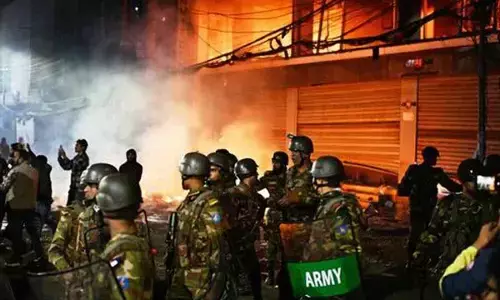Understanding the NPA’s and their impact

A Non-Performing Asset refers to a classification for loans on the books of financial institutions that are in default or are in arrears on scheduled payments of principal or interest. In most cases, debt is classified as nonperforming when loan payments have not been made for a period of 90 days.
What is an NPA?
A Non-Performing Asset refers to a classification for loans on the books of financial institutions that are in default or are in arrears on scheduled payments of principal or interest. In most cases, debt is classified as nonperforming when loan payments have not been made for a period of 90 days.
According to RBI, terms loans on which interest or instalment of principal remain overdue for a period of more than 90 days from the end of a particular quarter is called a Non-performing Asset. However, in terms of Agriculture / Farm Loans; the NPA is defined as under-For short duration crop agriculture loans such as paddy, Jowar, Bajra etc. if the loan (instalment / interest) is not paid for 2 crop seasons, it would be termed as a NPA. For Long Duration Crops, the above would be 1 Crop season from the due date.
Non-Performing Assets which are notoriously called as NPA’s by the banking sector have become a pain for both public and private sector banks in India.
From a peak of 9.2 per cent in January-March 2016, GDP growth has fallen every successive quarter: First to 7.9 per cent, then 7.5 per cent, followed by demonetisation which reduced it further to 7 per cent in October-December 2016, then 6.1 per cent and finally 5.7 per cent in April-June 2017.
One major challenge is the rising Non-Performing Assests (NPAs) of the public-sector banks (PSBs).
How grim is the situation?
- According to the RBI’s statistical tables relating to banks in India 2015-2016, NPAs were 3 per cent of gross advances of all banks in India in 2013.
- By 2016, they had grown to 9.3 per cent. The increase was much more pronounced for nationalised banks — from 2.9 per cent in 2013 to 13.8 per cent in 2016 — compared to privately-owned banks where the NPAs rose from 2 per cent of gross advances in 2013 to 3.1 per cent in 2016.
- For the 10 worst PSBs, gross NPAs averaged 16.4 per cent of gross advances as on December 2016, from 22.4 per cent for the Indian Overseas Bank to 14.1 per cent for the Central Bank of India — in effect, each having thoroughly destroyed its balance sheet.
- The system does not have enough capital to take care of its bad loans.
What led to this situation?
- In an exuberant milieu that started with the UPA 1 government and continued until three years after the global financial crisis of 2008, large corporations conceived major projects proposals in capital-intensive sectors such as power, ports, airports, housing and highway construction.
- Banks were only too keen to lend, often without sufficient evaluation of risks and returns.
- Things started worsening with the policy paralysis brought about by the spectrum and coal mining scandals.
- Soon, most projects were getting stuck, especially in power and highways; and banks found their loans going sour.
- Initially, the extent of non-performing loan assets (NPAs) was hidden by “ever-greening”.
- They were revealed as the RBI tightened the norms.
How are businesses getting affected?
- When an entrepreneur gets an order, he uses working capital from banks which finances the raw material inventory and work-in-progress.
- After production, delivery and collection of final payments, he pays interest on that working capital and draws it down with the bank until the next order.
- If the working capital cycle remains intact and accommodative, businesses are not hit by a squeeze on financing. But with severe constraints on such finance, all businesses are hit, irrespective of how good demand may be.
- Public sector banks (PSBs), comprising 21 “nationalised banks” and six of the State Bank of India group, account for almost 70 per cent of the assets and liabilities of the system.
How have the PSBs behaved in such circumstances?
With large losses on account of heavy provisioning and bad loans eroding their balance sheets, the PSBs have curtailed loans and advances.
NPAs definition by Reserve Bank of India (RBI)
An asset, including a leased asset, becomes non-performing when it ceases to generate income for the bank.
- Technical definition by RBI on NPA on different cases NPA is a loan or an advance where…
- Interest and/ or installment of principal remain overdue for a period of more than 90 days in respect of a term loan.
- The account remains ‘out of order’ in respect of an Overdraft/Cash Credit (OD/CC).
- The bill remains overdue for a period of more than 90 days in the case of bills purchased and discounted.
- The installment of principal or interest thereon remains overdue for two crop seasons for short duration crops.
- The installment of principal or interest thereon remains overdue for one crop season for long duration crops.
- The amount of liquidity facility remains outstanding for more than 90 days, in respect of a securitisation transaction undertaken in terms of guidelines on securitisation dated February 1, 2006.
- In respect of derivative transactions, the overdue receivables representing positive mark-to-market value of a derivative contract, if these remain unpaid for a period of 90 days from the specified due date for payment.
Categories of Non-Performing Assets (NPAs)
Based upon the period to which a loan has remained as NPA, it is classified into 3 types:
How serious is India’s NPA issue?
- More than Rs. 7 lakh crore worth loans are classified as Non-Performing Loans in India. This is a huge amount.
- The figure roughly translates to near 10% of all loans given.
- This means that about 10% of loans are never paid back, resulting in substantial loss of money to the banks.
- When restructured and unrecognised assets are added the total stress would be 15-20% of total loans.
- NPA crisis in India is set to worsen.
- Restructuring norms are being misused.
- This bad performance is not a good sign and can result in crashing of banks as happened in the sub-prime crisis of 2008 in the United States of America.
Reasons for the rise in NPA in recent years
- GDP slowdown -Between early 2000's and 2008 Indian economy were in the boom phase. During this period Banks especially Public sector banks lent extensively to corporate. However, the profits of most of the corporate dwindled due to slowdown in the global economy, the ban in mining projects, and delay in environmental related permits affecting power, iron and steel sector, volatility in prices of raw material and the shortage in availability of. This has affected their ability to pay back loans and is the most important reason behind increase in NPA of public sector banks.
- One of the main reasons of rising NPA is the relaxed lending norms especially for corporate honchos when their financial status and credit rating is not analyzed properly. Also, to face competition banks are hugely selling unsecured loans which attributes to the level of NPAs.
- 5 sectors Textile, aviation, mining, Infrastructure contributes to most of the NPA, since most of the loan given in these sector are by PSB, They account for most of the NPA.
- Public Sector banks provide around 80% of the credit to industries and it is this part of the credit distribution that forms a great chunk of NPA. Last year, when kingfisher was marred in financial crisis, SBI provided it huge amount of loan which it is not able to recover from it.
- There is a myth that main reason for rise in NPA in Public sector banks was Priority sector lending, However according to the findings of Standing Committee on Finance NPAs in the corporate sector are far higher than those in the priority or agriculture sector. However, even the PSL sector has contributed substantially to the NPAs. As per the latest estimates by the SBI, education loans constitute 20% of its NPAs.
- The Lack of Bankruptcy code in India and sluggish legal system make it difficult for banks to recover these loans from both corporate and non-corporate.
- Diversification of funds to unrelated business/fraud.
- Lapses due to diligence.
- Busines losses due to changes in business/regulatory environment.
- Lack of morale, particularly after government schemes which had written off loans.
- Global, regional or national financial crisis which results in erosion of margins and profits of companies, therefore, stressing their balance sheet which finally results into non-servicing of interest and loan payments. (For example, the 2008 global financial crisis).
- The general slowdown of entire economy for example after 2011 there was a slowdown in the Indian economy which resulted in the faster growth of NPAs.
- The slowdown in a specific industrial segment, therefore, companies in that area bear the heat and some may become NPAs.
- Unplanned expansion of corporate houses during boom period and loan taken at low rates later being serviced at high rates, therefore, resulting into NPAs.
- Due to mal-administration by the corporates, for example, willful defaulters.
- Due to misgovernance and policy paralysis which hampers the timeline and speed of projects, therefore, loans become NPAs. For example Infrastructure Sector.
- Severe competition in any particular market segment. For example Telecom sector in India.
- Delay in land acquisition due to social, political, cultural and environmental reasons.
- A bad lending practice which is a non-transparent way of giving loans.
- Due to natural reasons such as floods, droughts, disease outbreak, earthquakes, tsunami etc.
- Cheap import due to dumping leads to business loss of domestic companies. For example Steel sector in India.
Other factors
- Banks did not conducted adequate contingency planning, especially for mitigating project risk. They did not factor eventualities like failure of gas projects to ensure supply of gas or failure of land acquisition process for highways.
- Restructuring of loan facility was extended to companies that were facing larger problems of over-leverage& inadequate profitability. This problem was more in the Public sector banks.
- Companies with dwindling debt repayment capacity were raising more & more debt from the system.
What is the impact of NPAs?
- Lenders suffer lowering of profit margins.
- Stress in banking sector causes less money available to fund other projects, therefore, negative impact on the larger national economy.
- Higher interest rates by the banks to maintain the profit margin.
- Redirecting funds from the good projects to the bad ones.
- As investments got stuck, it may result in it may result in unemployment.
- In the case of public sector banks, the bad health of banks means a bad return for a shareholder which means that government of India gets less money as a dividend. Therefore it may impact easy deployment of money for social and infrastructure development and results in social and political cost.
- Investors do not get rightful returns.
- Balance sheet syndrome of Indian characteristics that is both the banks and the corporate sector have stressed balance sheet and causes halting of the investment-led development process.
- NPAs related cases add more pressure to already pending cases with the judiciary.
Steps taken by RBI and Government in last few years to curb NPA
- Government has launched ‘Mission Indradhanush’ to make the working of public sector bank more transparent and professional in order to curb the menace of NPA in future.
- Government has also proposed to introduce Bankruptcy code.
- RBI introduced number of measures in last few years which include tightening the Corporate Debt Restructuring (CDR) mechanism, setting up a Joint Lenders' Forum, prodding banks to disclose the real picture of bad loans, asking them to increase provisioning for stressed assets, introducing a 5:25 scheme where loans are to be amortized over 25 years with refinancing option after every 5 years, and empowering them to take majority control in defaulting companies under the Strategic Debt Restructuring (SDR) scheme.
- NPAs story is not new in India and there have been several steps taken by the GOI on legal, financial, policy level reforms. In the year 1991, Narsimham committee recommended many reforms to tackle NPAs. Some of them were implemented.
The Debt Recovery Tribunals (DRTs)–1993
To decrease the time required for settling cases. They are governed by the provisions of the Recovery of Debt Due to Banks and Financial Institutions Act, 1993.However, their number is not sufficient therefore they also suffer from time lag and cases are pending for more than 2-3 years in many areas.
Credit Information Bureau – 2000
A good information system is required to prevent loan falling into bad hands and therefore prevention of NPAs. It helps banks by maintaining and sharing data of individual defaulters and willful defaulters.
Lok Adalats – 2001
They are helpful in tackling and recovery of small loans however they are limited up to 5 lakh rupees loans only by the RBI guidelines issued in 2001. They are positive in the sense that they avoid more cases into the legal system.
Compromise Settlement – 2001
- It provides a simple mechanism for recovery of NPA for the advances below Rs. 10 Crores.
- It covers lawsuits with courts and DRTs (Debt Recovery Tribunals) however willful default and fraud cases are excluded.
Sarfaesi Act – 2002
- The Securitization and Reconstruction of Financial Assets and Enforcement of Security Interest (SARFAESI) Act, 2002 – The Act permits Banks / Financial Institutions to recover their NPAs without the involvement of the Court, through acquiring and disposing of the secured assets in NPA accounts with an outstanding amount of Rs. 1 lakh and above.
- The banks have to first issue a notice. Then, on the borrower’s failure to repay, they can:
- Take ownership of security and/or
- Control over the management of the borrowing concern.
- Appoint a person to manage the concern.
- Further, this act has been amended last year to make its enforcement faster.
ARC (Asset Reconstruction Companies)
- The RBI gave license to 14 new ARCs recently after the amendment of the SARFAESI Act of 2002.
- These companies are created to unlock value from stressed loans. Before this law came, lenders could enforce their security interests only through courts, which was a time-consuming process.
Corporate debt restructuring – 2005
It is for reducing the burden of the debts on the company by decreasing the rates paid and increasing the time the company has to pay the obligation back.
5:25 rule – 2014
- Also known as, Flexible Structuring of Long Term Project Loans to Infrastructure and Core Industries.
- It was proposed to maintain the cash flow of such companies since the project timeline is long and they do not get the money back into their books for a long time, therefore, the requirement of loans at every 5-7 years and thus refinancing for long term projects.
Joint Lenders Forum – 2014
It was created by the inclusion of all PSBs whose loans have become stressed. It is present so as to avoid loan to same individual or company from different banks. It is formulated to prevent the instances where one person takes a loan from one bank to give a loan of the other bank.
Bad Banks – 2017
Economic survey 16-17, also talks about the formation of a bad bank which will take all the stressed loans and it will tackle it according to flexible rules and mechanism. It will ease the balance sheet of PSBs giving them the space to fund new projects and continue the funding of development projects.
How to curb the menace of PSB’s Short Term measures
- Review of NPA'S/Restructured advances- We need to assess the viability case by case. Viable accounts need to be given more finance for turnaround and unviable accounts should either be given to Asset Reconstruction Company or Management/ownership restructuring or permitting banks to take over the units.
- Bankruptcy code should be passed as soon as possible. Bankruptcy code will make it easier for banks to recover loans from unviable enterprises.
- Government should establish Asset Reconstruction Company (ARC) with equity contribution from the government and the Reserve Bank of India (RBI). The established ARC should take the tumor (of non-performing assets or NPAs) out of the banking system.
- An ARC acquires bad loans from banks and financial institutions, usually at a discount, and works to recover them through a variety of measures, including sale of assets or a turnaround steered by professional management. Relieved of their NPA burden, the banks can focus on their core activity of lending.
Long term Measures
- Improving credit risk management- This includes credit appraisal, credit monitoring and efficient system of fixing accountability and analyzing trends in group leverage to which the borrowing firm belongs to:
- Sources/structure of equity capital-Banks need to see that promoter's contribution is funded through equity and not debt.
- Banks should conduct necessary sensitivity analysis and contingency planning while appraising the projects and it should built adequate safeguards against such external factors.
- Strengthen credit monitoring-Develop an early warning mechanism and comprehensive MIS(Management Information System) can play an important role in it. MIS must enable timely detection of problem accounts, flag early signs of delinquencies and facilitate timely information to management on these aspects.
- Enforce accountability- Till now lower ring officials considered accountable even though loaning decisions are taken at higher level. Thus sanction official should also share the burden of responsibility.
- Restructured accounts should treated as non performing and technical write offs where Banks remove NPA'S from their balance sheets Permanently should be dispensed with.
- Address corporate governance issues in PSB. This include explicit fit and proper criteria for appointment of top executives and instituting system of an open market wide search for Chairman.
What’s the solution?
- The NPA crisis in the 1990s was mitigated by a $500 million World Bank loan backed by a corresponding budgetary outlay.
- This time the cost will be higher and, therefore, one must target the banks carefully.
- But if we do so, we will strengthen distressed balance sheets and give space to the recapitalised bank to behave as they should. Recapitalisation will raise their enterprise value, which can then be leveraged through selective divestment.
- The finance minister thus should begin selective PSB recapitalisation.
Expected Questions
Indian economy is facing slowdown. In such a scenario to keep the economy going it’s necessary that the private sector has enough funds to invest in the economy. In this light reviving public-sector banks has become a necessity. Discuss what should be done to revive the PSBs.
















